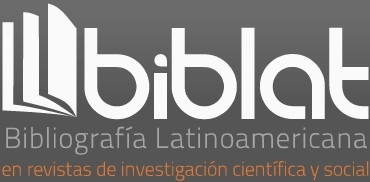The Pathogenic Secrets in Families, and Beyond...
DOI:
https://doi.org/10.35494/topsem.2021.1.45.716Keywords:
Pathogenic Secret, Psychic Secret, Generational Transmission, PsychoanalysisAbstract
In order to approach, from the point of view of psychology, the subject of family secrets ―the intimate source of what, on a collective scale, can take the form of “post-memory”―, it has been necessary to introduce theoretical renovations in relation to the role of the preconscious and the subconscious, to cleavage, to the symbolization that operates in a sensorial-affective-motor mode, and to social reality. Adopting these renovations, from the beginning of the 1980s I proposed to apprehend the pathogenic secrets around three concepts: the Secret (with a capital letter) as a psychic fact, the “oozing” of the secret, and its “bouncing” through generations. These tools allowed me to better understand the importance of pathogenic secrets not only in families but also in institutions, which can be considered as one of the links that make possible the passage from individual to social and historical memory.
Downloads
References
Boszormenyi-Nagy, I. & Spark, G. M. (1965). Invisible loyalties. Nueva York. Harper & Row.
Eiguer, A. et al. (1997). Le générationnel, approche en thérapie familiale psychanalytique. París. Dunod.
______, Granjon E. & Loncan, A. (2006). La part des ancêtres. París. Dunod.
Faimberg, H. (1993). À l’écoute du télescopage des générations : pertinence psychanalytique du concept. En R.
Kaës & H. Faimberg et al., Transmission de la vie psychique entre générations. París. Dunod.
Ferenczi, S. (1970). Œuvres complètes. Tomo 2. 1913-1919. París. Payot.
Ferreira, A. J. (1977). Family Myths. En P. Watzlawick P. & J. H. Weakland, The Interactional View – Studies at the
MRI, Palo Alto, 1965-74 (pp. 49-55). Nueva York.
Fonagy, P. (2004). Théorie de l’attachement et psychanalyse. París. Érès.
Havas, D. et al. (2010). Cosmetic use of Botulinum Toxin-A Affects Processing of Emotional Language.
Psychological Science, 21.
Kaës, R. et al. (1993). Transmission de la vie psychique entre générations. París. Dunod.
Mijolla, A. de (1986). Les visiteurs du moi. París. Les Belles Lettres.
Nachin, C. (1993). Les fantômes de l’âme. París. L’Harmattan.
Ricœur P. (1983). Temps et récit. París. Le Seuil.
Semprún, J. (1994). L’Écriture ou la vie. París. Gallimard.
Snyders J.-C. (1996). Drames enfouis. París. Buchet-Chastel.
Tisseron, S. (1985). Tintin chez le psychanalyste. París, Aubier.
______ (1989). Tintin et les secrets de famille. París. Aubier.
______ (1992). La Honte. París. Dunod.
______ (1996). Secrets de famille, mode d’emploi. París. Hachette.
______ & Torok, M. et al. (1995). Le psychisme à l’épreuve des générations, clinique du fantôme. París. Dunod.
Tisseron, S. (2005). Vérités et mensonges de nos émotions. París. Albin Michel.
Winnicott, D. W. (1974). La crainte de l’effondrement. Nouvelle Revue de Psychanalyse. París. Gallimard.
Downloads
Published
How to Cite
Issue
Section
License

Tópicos del Seminario is licensed under a Creative Commons Reconocimiento-NoComercial-CompartirIgual 4.0 Internacional License.














